How to tie the straps on your backpack?
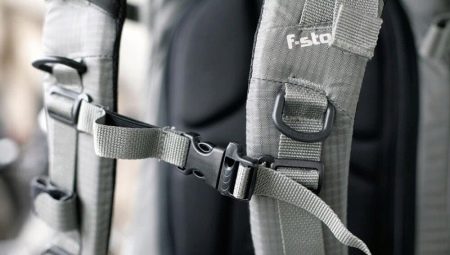
The backpack is indispensable both within the city and in suburban trips, but for comfort it is important to properly fasten it. Even with a load, the back and shoulders should be comfortable. A good fastening of the straps will allow you to maintain health and relieve unnecessary stress on the spine. A properly tied backpack will make it possible to avoid overwork and injury.
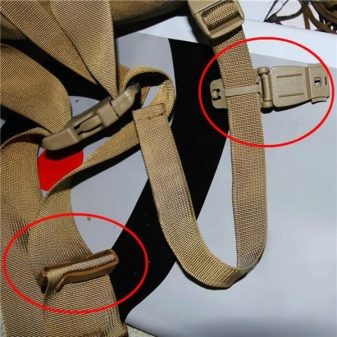
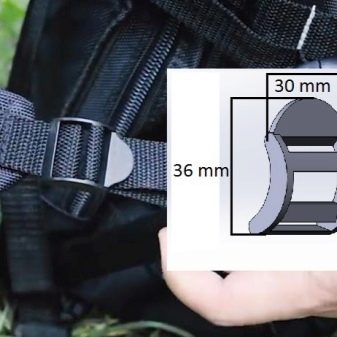
Preparation
When setting up a backpack, all actions should be performed in a specific order. As a result, it will be possible to avoid numerous mistakes and unpleasant sensations during prolonged carrying of the load over the shoulders. This is important as muscles and bones can suffer from poorly distributed stress. In order for the product to fit perfectly, you must start by adjusting the straps at the waist and shoulders in accordance with the person's height.

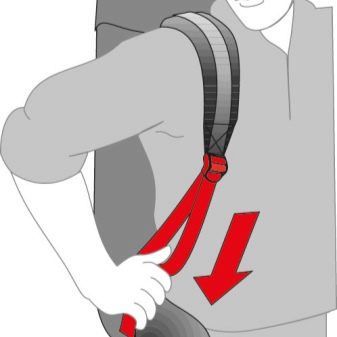
Before positioning the straps at the optimal level, you need to create the approximate operating conditions. It turns out that you need to fill the backpack as much as possible. It is advisable to feel in advance how the spine will feel with this or that method of packing things. Before tying the straps on the backpack, make sure that the loaded bag does not dig into the lumbar region.

It is advisable to avoid bumps or sharp protrusions so as not to rub your back and avoid excessive discomfort.
Preparation for tuning begins by relaxing all puffs. Only after that you can start adjusting your own figure. However, loosen it carefully so that the buckle does not fall out of the retainer. To do this, you do not need to completely loosen the belts, but only lengthen them. It is best to do this by placing the backpack on the floor. On weight, the weakening procedure is not performed, since there is always a possibility of dropping the backpack on your own legs.If the adjustment is to be done on the way, then it is better to entrust it to unauthorized persons.
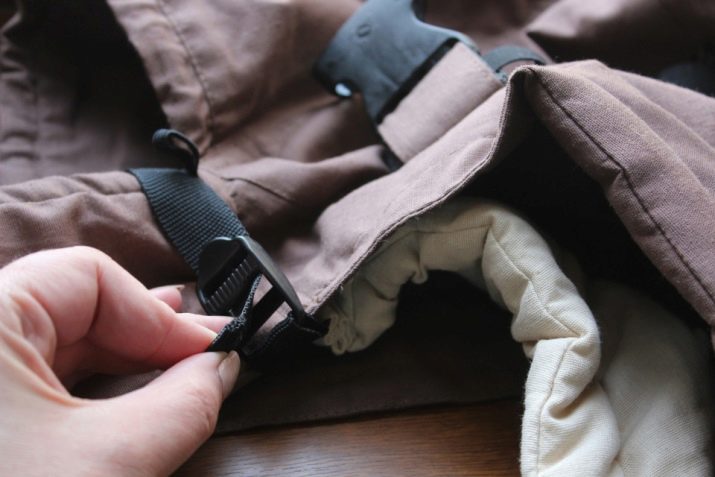
When self-tuning, after loosening the straps, the backpack must be pulled over the shoulders. This must be done correctly, according to the scheme:
- first, the shoulder bag is placed on the support so that its lower part is at the level of the lumbar spine (you can also place the product on the knee by lifting one strap in advance);
- now you should insert your hand into the resulting loop;
- after that, carefully and without sudden jerks, you need to tuck the backpack onto your back;
- the final stage is throwing on the second shoulder strap.
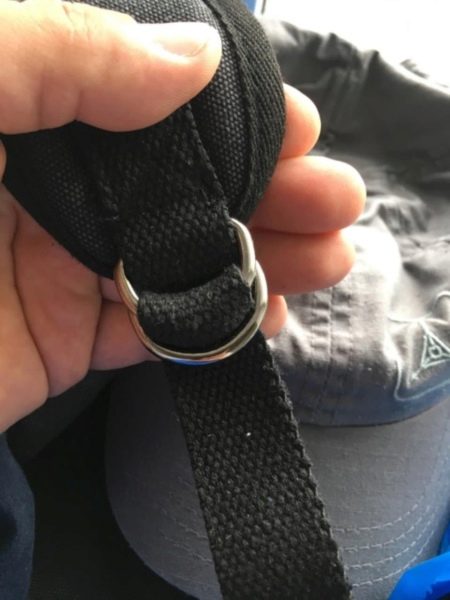
Initially, the whole process looks very simple. But when the backpack is fully loaded, it will be difficult to lift and throw it on your back. It is important that the shoulder bag is as tall as possible. If the base touching the back is very long, then the straps will constantly begin to slip. All other sections on the backpack will also move, which will lead to an unstable body position. And if at the same time the backpack is filled completely, then the person will simply begin to fall back.

If the base, on the contrary, is very high, then the belt on the belt jumps up, and the straps roll. As a result, the weight will be incorrectly distributed, which will lead to unpleasant sensations. In no case should you throw your backpack over your shoulders when your back is just straight.
Instructions
The straps can only be properly adjusted on a pre-filled shoulder bag. Moreover, it is desirable to load it as much as possible. This is what will allow you to evenly distribute the load. If there are ties on the sides inside the backpack, then with their help you should fix things well. Thanks to this, they will not dangle throughout the interior space.
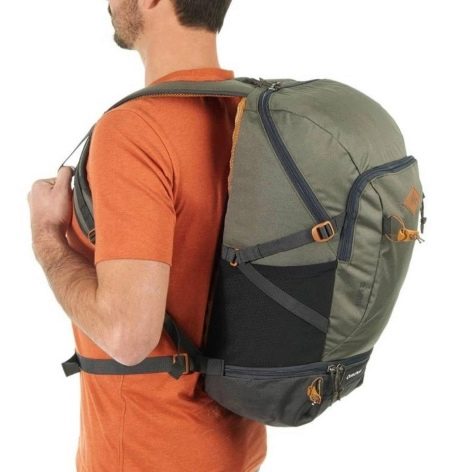
Back adjustment
The back is most often regulated in large backpacks. As a rule, it is adjusted according to the person's height to make it easier to carry the product. As for the models of small capacity, their back cannot be adjusted. Some manufacturers have options with specific spin sizes. This reduces the weight of the backpack as there are no carabiners and no additional harness system. Do-it-yourself adjustment begins with determining the most comfortable level of the belts on the waist and shoulders. In each case, this must be done on an individual basis.
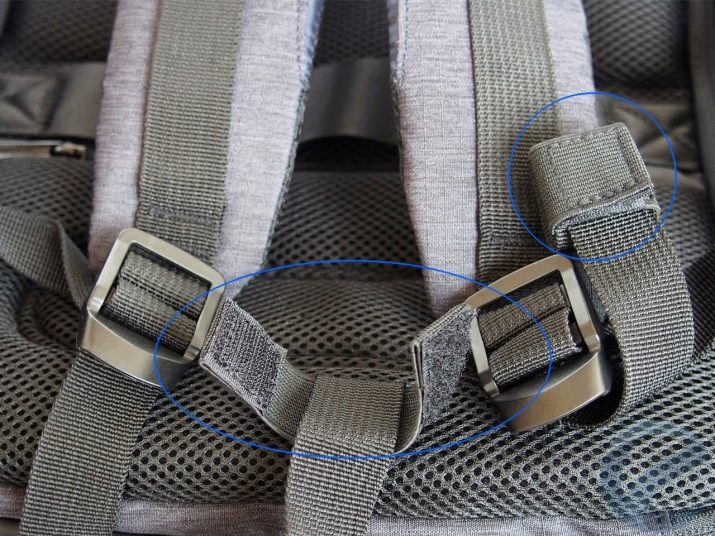
Shoulder straps
The straps located on the shoulders are the main ones, since they can be used to customize the backpack specifically for yourself. Adjustment should be carried out at the top and bottom points. In this case, you need to pay attention to how tightly the bag will be in contact with the back. The best option would be models that have soft inserts that prevent shoulder chafing and make operation more comfortable. When the backpack fits snugly on the back, it should not interfere with movement. In the process of tuning, the straps must be tightened until a noticeable backward advantage appears.
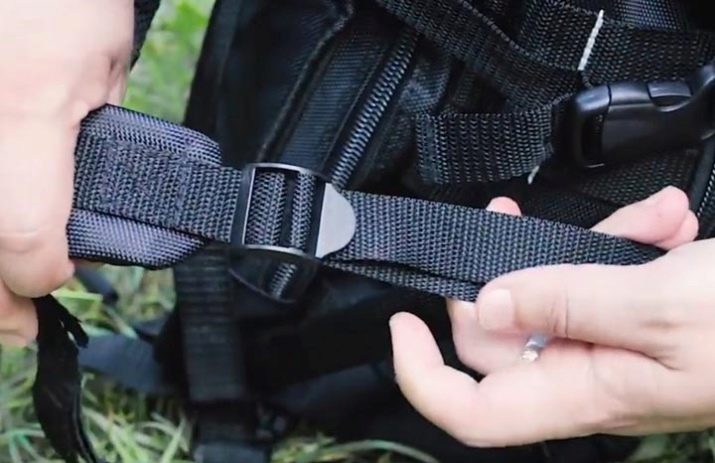
Chest tightening
As a tie on the chest, you can most often see a belt with a carabiner. It allows you to connect the shoulder straps on the chest so that they do not spread out in different directions. Thus, the backpack will fit securely against your back, and the straps will not slide off your shoulders. Moreover, the weight in this case will be correctly distributed over the spine, which is especially important when traveling.
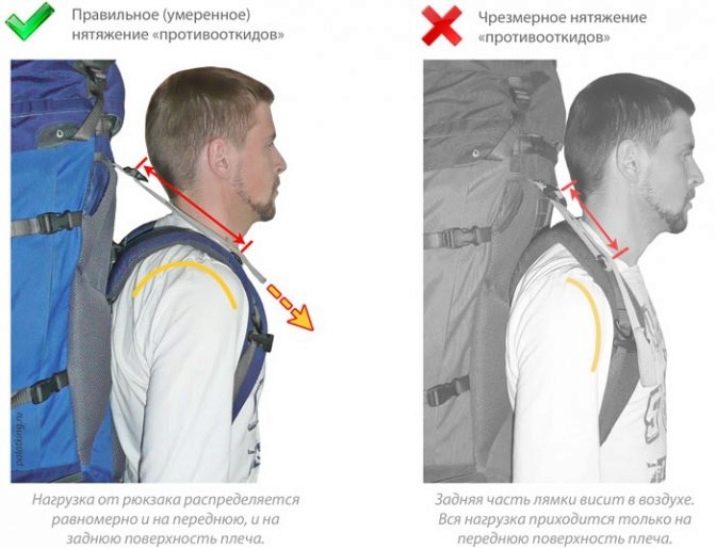
When fixing, it should be borne in mind that the chest strap should not interfere with normal breathing.
Belt
There is also a retainer in the belt area that allows you to optimally distribute the load during transfers. First, the belt on the belt must be fastened, and then tightened, adjusting according to your own figure. It is important to ensure that the waist belt is positioned over the hip bones. If tightened correctly, it will be convenient, since the weight is distributed between the shoulders and the belt.
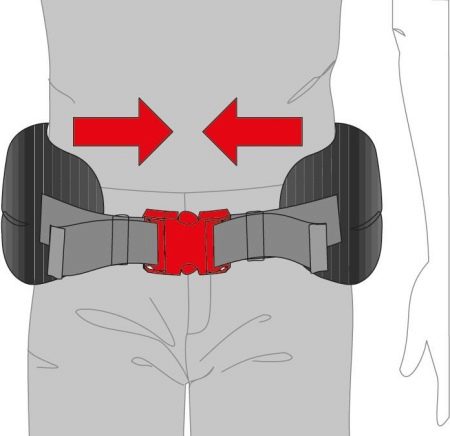
It should be remembered that the belt should not be too tight so that the body is not overtightened.However, the belt should not be allowed to hang freely, otherwise it will begin to slide down.
Usually backpack manufacturers make a belt with a margin so that it can be extended for overweight users. Therefore, if desired, after adjustment, it can be shortened.
Also, this belt can be completely removed. To do this, it is enough to turn the halves of the belt to the outside and thread them in front into special fasteners. Stabilizers on the hip belt allow you to fix the bottom of the backpack so that it does not dangle during active movement. This is especially effective for models that are loaded with a weight of 18 kilograms or more.
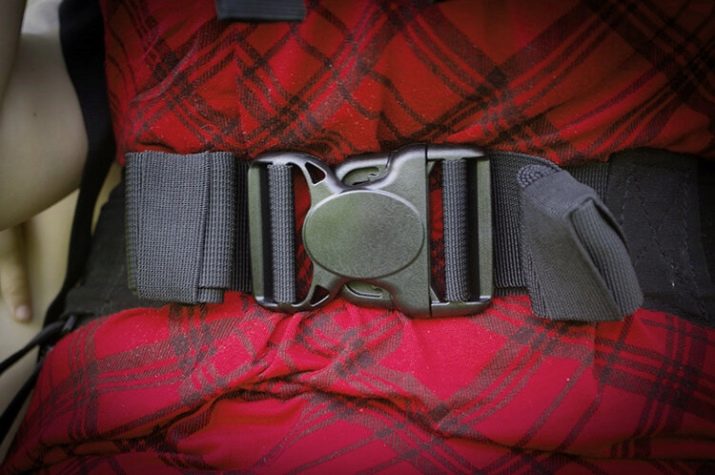
Additional elements
Many backpacks have small straps that are located at the base of the belt. Their purpose is to securely attach the shoulder bag to the body. When adjusting these straps, it is important not to overtighten them, as this will lead to the formation of folds and interfere with the walking process. Additional straps can also be found on the shoulder straps around the collarbones. Usually they need to be pulled up 30 degrees from the ground. If they are too long, then the straps should be shortened.
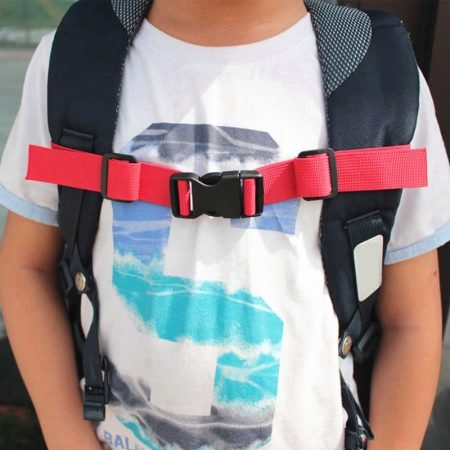
On some models of backpacks, the adjustment straps are equipped with rings. With their help, it is convenient to pull the straps to see if their lengths are equal. The anti-fall pads should be one to two centimeters higher than the collarbone. In this case, the shoulder strap will withstand an even load. The angle between the anti-roll bar in the retracted position and the horizontal surface should be 45 degrees. As for the shoulder strap and the shoulder, there should be no gaps between them. If they are found, it will be necessary to adjust the length of the anti-rollback and the height of the belt system. It is worth clarifying that this is possible only in high-quality backpack models.
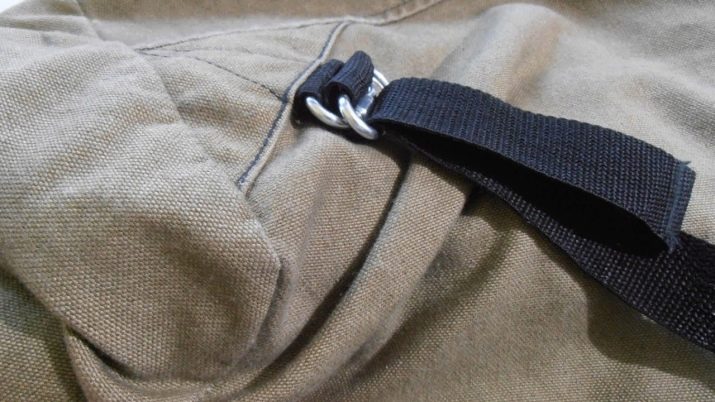
Useful Tips
Improper attachment can lead to the fact that the person will quickly get tired, and pain in the back and arms. Strong pressure on the forearms or shoulders with the straps may even result in poor circulation. This will be noticeable by the freezing brushes. There is no need for special equipment for well-tied belts. It is enough that the position of the shoulder bag is changed several times during the walk. If you feel comfortable, then everything is done correctly.

It is important to choose backpack models with adjustable straps, as this is the key to success. The strap setting starts at the waistband and ends at the shoulders.
Before putting on the product, you should look at all the straps and anchors: they must be tight. It is important that the belts do not jump out of the fasteners and do not break when worn.
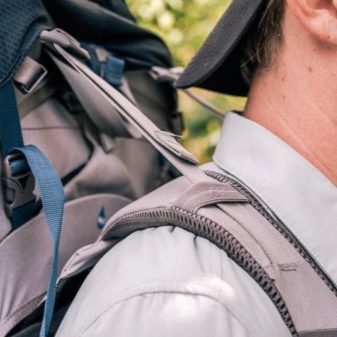
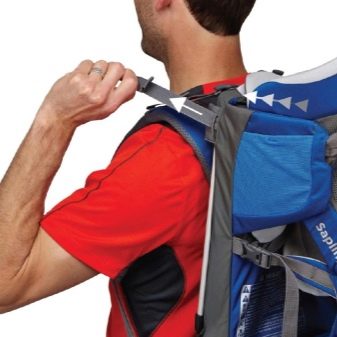
On average, tying the straps takes about 15 minutes. In this case, you should not be afraid of experiments, because they will allow you to choose the most optimal option. The backpack should be comfortable. The load should be distributed over several zones, and not concentrated in one. This will keep the risk of stretch marks and injury to a minimum.
To prevent the belt buckles from popping out with a lot of weight, it is necessary to seal the ends. To do this, at the ends of the straps, you need to bend about 2-3 centimeters, and then sew them along the edge. This will secure the belts securely. If it is not possible to sew, then you can simply tie single knots at the ends.
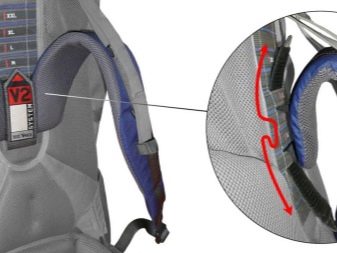
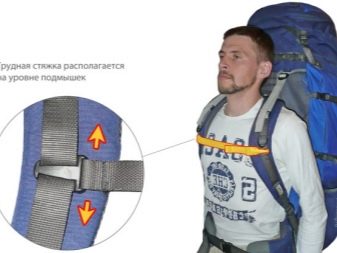
You will learn how to tie the straps on your backpack in the video below.








